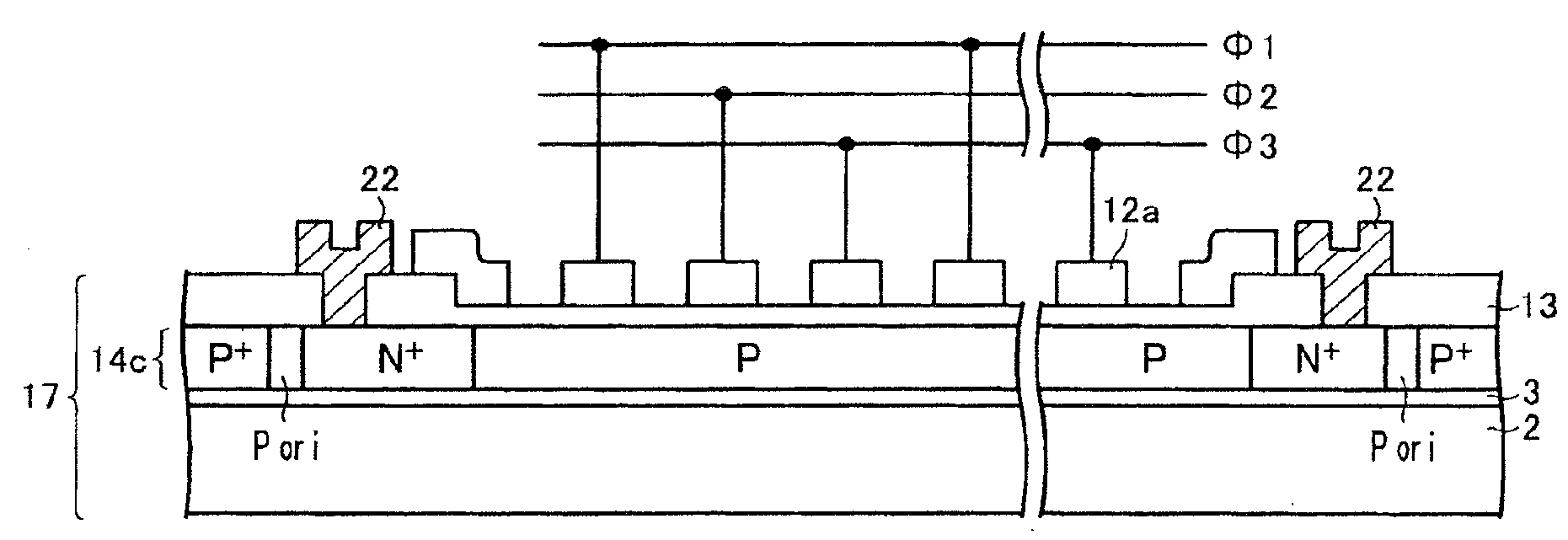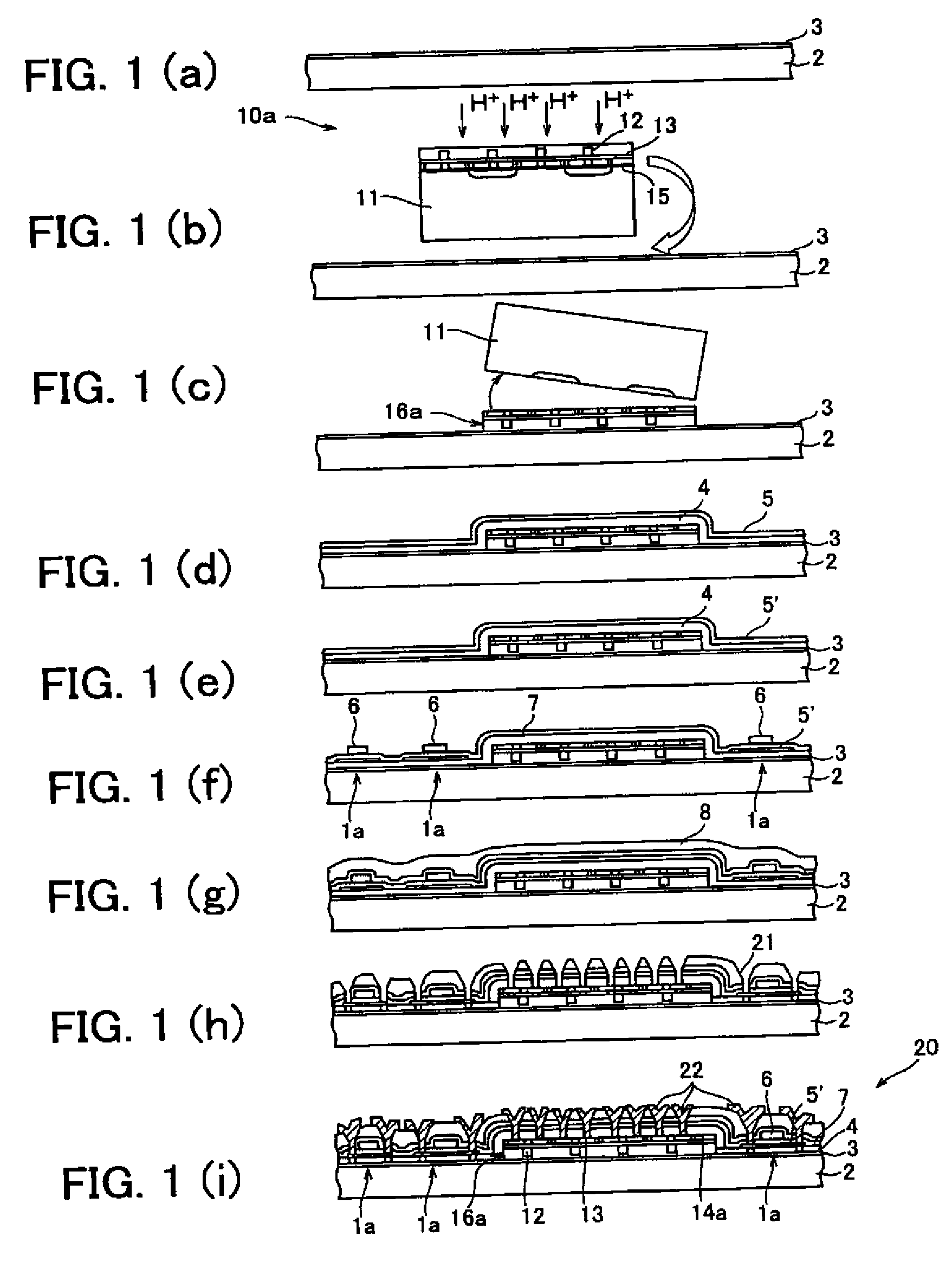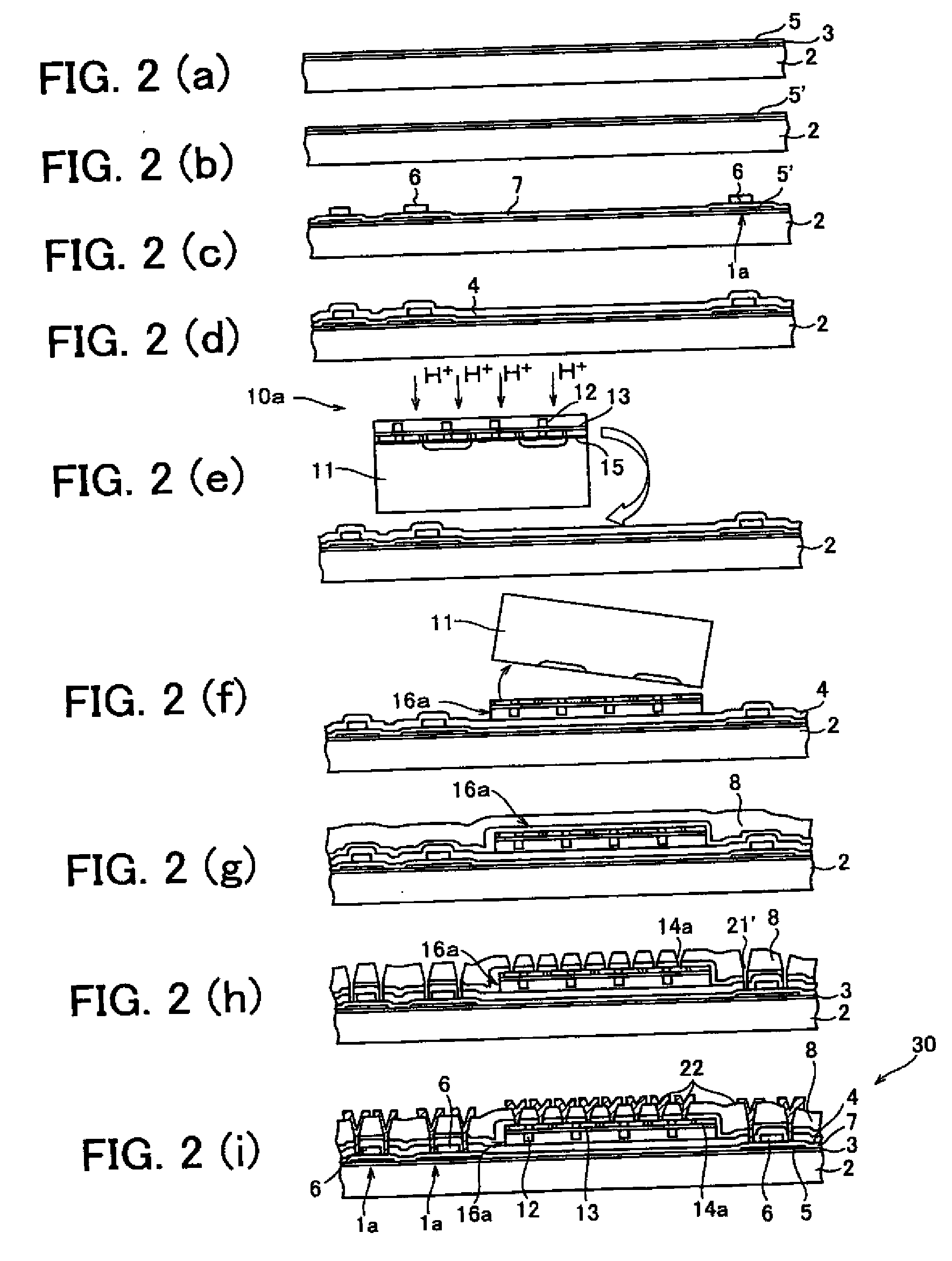Single-crystal silicon substrate, soi substrate, semiconductor device, display device, and manufacturing method of semiconductor device
a semiconductor device and single-crystal technology, applied in the direction of individual semiconductor device testing, semiconductor/solid-state device testing/measurement, instruments, etc., can solve the problems of low heat resistance, hinder the improvement of productivity, and the performance of the transistor to form a high-performance silicon device, etc., to achieve easy formation and enhance adhesive strength
- Summary
- Abstract
- Description
- Claims
- Application Information
AI Technical Summary
Benefits of technology
Problems solved by technology
Method used
Image
Examples
first embodiment
[0141]The following will describe a single-crystal silicon substrate, a semiconductor device, and a manufacturing method thereof in accordance with an embodiment of the present invention. FIGS. 1(a)-1(i) are cross sections illustrating a manufacturing process of a semiconductor device of the present embodiment. The semiconductor device of the present embodiment is a high-performance and highly-functional semiconductor device in which a MOS non-single-crystal silicon thin-film transistor and a MOS single-crystal silicon thin-film transistor are formed on different areas of the surface of an insulating substrate, the semiconductor device being formed on a TFT active matrix substrate.
[0142]The MOS thin-film transistor includes an active semiconductor layer, gate electrodes, a gate insulating film, and high-concentration impurity doped sections (source and drain electrodes) formed on the both sides of the gate. The MOS thin-film transistor is a typical transistor in which the gate elect...
embodiment 2
[0192]The following will describe another embodiment of a single-crystal silicon substrate, a semiconductor device, and a method of manufacturing the same, in accordance with the present invention. FIGS. 2(a)-2(i) are cross sections illustrating a manufacturing process of the semiconductor device of said another embodiment of the present invention. By the way, members having the same functions as those described in Embodiment 1 are given the same numbers, so that the descriptions are omitted for the sake of convenience.
[0193]Being identical with the above-described semiconductor device 20 of Embodiment 1, a semiconductor device 30 of the present embodiment is arranged in such a manner that, a MOS single-crystal silicon thin-film transistor 16a and a non-single-crystal silicon thin-film transistor 1a are formed in different areas of an insulating substrate 2. Thus, the semiconductor device 30 of the present embodiment is also high-performance and highly functional, as the semiconduct...
embodiment 3
[0216]The following will describe a further embodiment of a single-crystal silicon substrate, a semiconductor device, and a method of manufacturing the same, in accordance with the present invention. FIGS. 3(a)-3(f) are cross sections illustrating a manufacturing process of the semiconductor device of the present embodiment. By the way, members having the same functions as those described in Embodiments 1 and 2 are given the same numbers, so that the descriptions are omitted for the sake of convenience.
[0217]As is the case with Embodiment 1, a semiconductor device 40 of the present embodiment is, as shown in FIG. 3(f), arranged such that a non-single-crystal silicon thin-film transistor and a single-crystal silicon thin-film transistor are formed on a single insulating substrate 2. While the present embodiment is identical with Embodiment 1 to the extent that the single-crystal silicon thin-film transistor is formed before the formation of the non-single-crystal silicon thin-film tr...
PUM
 Login to View More
Login to View More Abstract
Description
Claims
Application Information
 Login to View More
Login to View More - R&D
- Intellectual Property
- Life Sciences
- Materials
- Tech Scout
- Unparalleled Data Quality
- Higher Quality Content
- 60% Fewer Hallucinations
Browse by: Latest US Patents, China's latest patents, Technical Efficacy Thesaurus, Application Domain, Technology Topic, Popular Technical Reports.
© 2025 PatSnap. All rights reserved.Legal|Privacy policy|Modern Slavery Act Transparency Statement|Sitemap|About US| Contact US: help@patsnap.com



